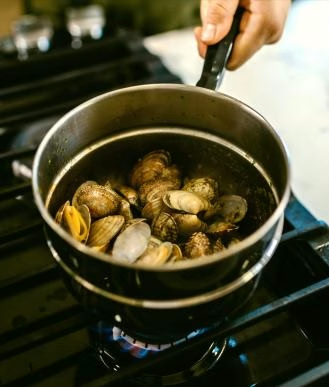We often judge whether clams are cooked by whether they open their shells. But have you ever wondered, “Why do clams open immediately after they’re cooked?” Clams are almost always closed when you buy them. What causes them to open in a second? It’s actually a change in the clam’s muscles.
The clam’s muscles exert force, keeping it tightly closed.
Have you ever seen a clam open its shell in water? Clams don’t just stay closed in water; opening and closing is a crucial behavior for them. Everyday movements, such as walking and feeding, require the shell to open.
Clamping the shell relies on the clam’s muscles. The adductor muscles, specifically the anterior and posterior adductor muscles, connect the two shells of the clam. When these muscles contract, the clam’s shell closes tightly.
When the clam’s adductor muscles are relaxed while it’s alive, the shell will actually open slightly, such as when it spits out sand.
Boiling clams open their shells? Why?
When boiling clams, the heat kills them. Cooking also causes the muscles to denature and lose their elasticity. When the adductor muscle can no longer close its shell, the ligaments attached to it, which help the shell open, naturally spring open, allowing the clam to open.
Thus, the shells open after boiling because the adductor muscle, which connects the two shells, loses its contractile function. When bivalves are cooked, the mantle and adductor muscle separate from either shell, and the ligaments pull the shell apart, causing it to spring open. This is how we witness the “shell opening” of clams.
If a clam doesn’t open, it’s definitely rotten.
However, many people have probably heard the saying that if a clam doesn’t open, it’s definitely rotten. Actually, that’s not necessarily true. When the clam’s adductor muscle is very tight, it can remain tightly attached to the shell even under high-temperature cooking, keeping it tightly closed. Therefore, clams that remain closed after cooking are not necessarily rotten.
To determine whether clams are dead or rotten, it’s recommended to observe the clams before cooking. Fresh clams should make a firm, crisp sound when tapped. You can also smell them for any foul odors. If they appear black after cooking, do not eat them.
*Reminder: Consuming clams undercooked can cause bacterial contamination. Considering the different sizes of clams and their safety, for added safety, it’s recommended to open the shells and cook them for about 3-5 minutes before eating.


Leave a Reply